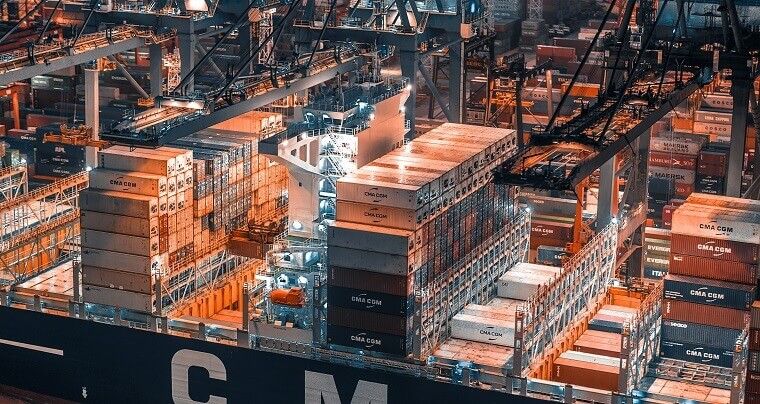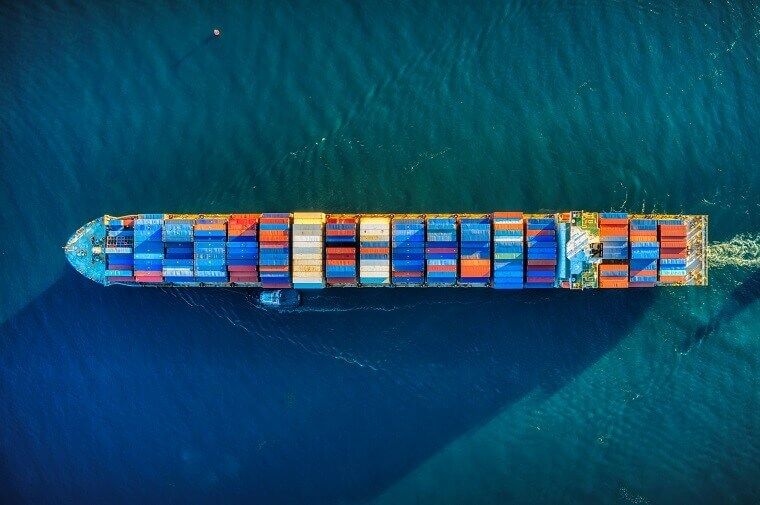Why is there a Supply Chain Issue and How to Avoid Supply Chain Shortages as Dropshippers

Most likely some of your favorite products have been hard to find recently, whether online or in stores. Among the items in short supply are cars, medications, food, and lumber. Business owners have, unfortunately, become increasingly concerned about supply chain disruptions. In 2021, they increased by 638% - which is both shocking and frustrating for business owners.
The outbreak of Coronavirus in 2020 had global implications. There was no escape for international supply chains. Overloaded supply chains forced companies to develop functional logistics as a way to become more competitive. A smooth supply process is difficult not only because of the pandemic but for numerous other reasons as well. The latter include labor shortages, material shortages, and production limitations.
In particular for online retailers and dropshippers, the increased demand also plays a significant role. This article highlights the current state of global supply chains, discusses the causes and consequences of supply bottlenecks, and offers solutions for e-commerce companies.
Factors Contributing to Supply Bottlenecks
Problems with the supply chain can be caused by a wide range of factors, some of which are mutually reinforcing, creating a complex problem that is difficult to solve. Below we show some of these factors.
Pandemic
Since 2020, the Corona pandemic has placed a strain on international supply chains. At first, lockdowns and restrictions caused labor shortages. Furthermore, stricter border controls are slowing the movement of goods on the international market and increasing workload.
It is obvious that the first two points are true, but the situation is made more complicated by the different stages of the pandemic in different regions.

In Asia, for example, the effects were felt early on, but the virus and its effects were not felt until much later in the rest of the world. China and Co. were able to quickly stabilize production with stringent measures. Europeans were in the first big wave at the time.
Material & Production Issues Due to Customer Buying Behavior
The pandemic has also affected purchasing decisions. As people around the world shop more online, the types of products they purchase have also changed. During the first lockdown, purchases of home office devices increased abruptly. This surprised the companies. The reasons for sometimes extreme delays in deliveries at that time are therefore understandable.
| Get Started Now to Grow Your Online Business with the Best AliExpress Dropshipping Tool - DSers! |
Consumer electronics also saw a sharp increase in sales. Therefore, these devices are in short supply of materials. A common example is chip production. There are also many other examples.
As such, many people invest a great deal of money in their homes - money that might normally be used for a car or vacation is quite often used to buy a new kitchen or furniture. Consequently, wood has become a scarce raw material as a result of an increase in demand.
Buying Behavior of Retailers
Can you recall when supermarkets ran out of toilet paper? The reason is that retailers buy as much merchandise as possible to compensate for delivery problems.
This is exactly what happened in supermarkets at the beginning of the pandemic when many people did it at once. We either sell out of products or can't replenish (reshelve) them in time.
Further congested supply chains result from people buying up the remaining stocks. There is a similar vicious cycle in global trade, leading to shortages of raw materials and a surplus of storage capacity.
Shipment Capacity
For the increased demand to be met, more ships would have to operate, more containers would have to be transported, and they would have to be loaded. The result is overheating and excessive demand at the ports in particular.
In consequence, there are long traffic jams at the ports, resulting in longer delivery times. The shipping companies try to avoid traffic jams by switching to smaller ports or taking alternative routes. Although this also results in long delays, it is done to simplify the planning process.
Shortage of Workers
The entire supply chain is currently experiencing a labor shortage. A coronavirus cluster may force the closure of entire ports or warehouses. Furthermore, there is a threat of strikes due to certain restrictions and conditions related to Corona measures.
A shortage of truck drivers is also a problem when it comes to moving cargo from the ports to the different regions. Labor shortages are also affecting production companies, and warehouse workers are in demand.
Disruptions in Unloading
Backlogs of vessels overwhelm ports' unloading capacity, which prevents them from stacking containers based on the destination as they normally would. There is a further delay caused by the fact that ultimately containers must be sorted by destination out of these stacks, either at the port or by rail at a nearby facility, resulting in essentially twice the work for this task.
Backing up Warehouses
The shortage of labor and other constraints have also caused warehouse backlogs. Containers destined for these warehouses are being stored in the intermodal facility.
Containers cannot be accepted at a final destination warehouse if it is full. If there is no place for the container to be taken by the drayage carrier, he will not pick it up from the intermodal ramp.

The container will therefore wait at an intermodal ramp until a space in the warehouse is available, instead of continuing its journey. As a result, when warehouses take too long to unload containers and chassis sit at the warehouse for too long, further delays result as there is a shortage of chassis at ramps.
Delayed Trains & Storage Constraints
The trains can only unload containers if they have room at the intermodal facility when they travel from the port to their destination. Without a ramp, trains can arrive at the port with containers, but will not be able to unload them.
To demonstrate the interdependence of the global supply chain, it is important to understand the potential disruption - not to blame. The failure of any link in the chain will affect every other link, as has been the case lately.
How Does the Global Supply Chain Work
Intermodal shipping is commonly referred to when people discuss global supply chains. This process entails loading products into intermodal containers, which are then transported overseas by cargo ship, via trains for inland shipping, and by trucks for first- and last-mile delivery.
Even though intermodal containers can travel seamlessly between modes of shipping, many parties are responsible for handling them. These include:
- Owners of beneficial cargo: Those who own the goods inside the container
- Carrier ships: Ships that transport containers overseas
- Ports: Locations where containers are discharged from vessels
- Rails: Companies that ship containers inland, primarily over long distances
- Truck drivers: The people responsible for moving containers from and to ports, as well as from and to railroad facilities, as well as handling final deliveries.
- Suppliers of chassis: Providers of the equipment necessary to transport containers by truck.
- Distributors and warehouses: Locations where containers are delivered at the end of a shipment.
Each of these parties must deliver on their commitments to ensure the supply chain runs smoothly. If one link in the chain breaks, the others may have difficulty picking up the slack.
Solutions to Avoid Supply Chain Shortages as Dropshippers
It is not easy to deal with a shortage. The problem is not easily solved, but manufacturers can take several measures to prevent it from occurring. Listed here are some ways to prevent and reduce out-of-stock situations that can be disruptive.
1. Conduct a Supply Chain Audit
Ensure that you analyze every aspect of your manufacturing and fulfillment processes. Make sure you know where every item and material comes from, how much they cost, how long it takes for them to arrive, and if there are any gaps or delays. To improve the process and eliminate any shortages, visibility is crucial.
Check for areas of improvement once you've done this. Do you have enough materials or products on hand to make larger purchase orders? Is it possible to pay for faster shipping to avoid lulls in delivery?
You may want to look for an alternative supplier if you're having trouble getting items from one. This won't always apply to global shortages, but it could be a good option in some situations. It may be more feasible to use a local manufacturer if the issue is with overseas suppliers. In any case, it's better to have something to sell than nothing at all.
In many cases, diversification makes sense. When something goes wrong, you have a backup if you work with multiple suppliers.
2. Find Alternate Materials
Take advantage of this opportunity to be creative. Think of alternatives if you can't find a particular material or if it has become extremely expensive. Consider bamboo, hemp, or wood composites if you typically craft your products with lumber. You could try using silicone instead of rubber if you cannot find rubber.
Consider embracing your brand and being unique if shipping and packaging materials are scarce. Instead of bubble wrap, why not fill shipping boxes with yarn if you sell knitting supplies? Include lightweight padding such as popcorn if you sell snacks.
3. Communicate Delays & Shortages to Your Customers
Staying in touch with customers about shortages, out-of-stock items, and shipping delays is one of the most important things you can do. When you let people know ahead of time, they will understand. However, if they discover this after having already placed an order, they may become frustrated. How can this be accomplished?

· Make sure your entire store is aware of the notice: You can display an important message on every page of your site with a store notice. Let customers know if there are delays in production or item shortages in advance.
· Create a new order status: Send email notifications based on the new order statuses so that customers know where their order is in the fulfillment process. A place for "items in production" or "orders shipped" would be useful, for instance.
· Add information to the Cart page: Let customers know that there might be a delay one last time to make them aware of the situation.
· Make tracking information easily accessible: Check the status of the order and let shoppers know when it will arrive.
4. Organize Your Product Portfolio
Manufacturing scrambled to meet demand during COVID-19, but there was a nasty surprise in the form of a radical shift in consumer buying patterns. With this demand shift, you have an opportunity to rethink your product portfolio and rationalize it so that you're focused on the more critical subsets. A few ideas:
- Analyze which products are surging in demand versus those that are declining
- Assess each product's strategic value
- To bring new products to market, assess opportunities for collaboration with business partners
5. Use Scenario Planning to Stress-test Supply Chains
Business scenario planning is not new, but when supply shortages occur, it becomes both more relevant and more important. Using digital sales and operations planning (S&OP) tools is one way to test your supply chain's resiliency before the next crisis hits.
By implementing the right simulation tool, your S&OP team can perform calculations "on-the-fly". The data-driven approach will show the impact of pricing increases, promotions, purchasing requirements, and production plans on the supply chain and P&L.
Additionally, you can create new scenarios to deal with inbound import shipments stuck in ports with parts, components, or finished goods by shifting suppliers from Asia to other locations-the possibilities are truly endless.
In preparing for supply chain disruptions, this is of more importance than ever, given the shortened timelines for manufacturers to receive deliveries.
6. Remove Single-point Failures
In case there is an interruption in supply, the company will not be able to produce, brick and mortar stores will be out of stock, and online retailers will experience backorders.
Dual-sourcing or having multiple sources of supply is the best way to ensure a backup in case of an unexpected delay. If a supplier's factory is suddenly shut down, the buyer still has other options to get the items they need.
7. Improve Collaboration with Suppliers
The importance of good communication with suppliers cannot be overstated. Building a good relationship with suppliers can lead to mutual collaboration and mutual benefits. Suppliers might hold their finished goods until their buyers need them.
By holding safety stock themselves, a supplier can protect themselves and their customers from larger variations in demand. A supplier who makes the product only when it is ordered may not be able to fulfill the buyer's order in time if demand spikes.
8. Make Sure Inventory Data Is Accurate
Cycle counting should be performed regularly by manufacturers. Continuous inventory counting reduces the time and effort required for physical inventory counting.

A well-documented and efficient receiving and material handling process is also important to ensure. When inventory levels are not accurately counted, stock shortages are easier to develop.
9. Stock up on Emergency Supplies & Plan ahead
Be as proactive as possible. Do not wait until all items or materials are gone to place a new purchase order. Make your orders in advance.
Keeping emergency supplies of manufacturing materials, packaging materials, and products on hand could also be a good idea in case of delays or shortages. Until you can get the items you need or find an alternative solution, you can continue as planned.
10. Plan Production to Adapt to Disruptions in Supply
Current material shortages are forcing companies to re-evaluate their production strategies. Consider, for example, using production planning to adapt to uncertain supply by pre-purchasing the components with the longest lead times from suppliers, or partnering with them to identify components with extended lead times or high uncertainty.
Bottom Line
There are ways to handle supply chain shortages even though they can be frustrating and scary at times. It's all about maintaining your processes, understanding how you can improve, and staying in touch as much as possible with your customers.
It is crucial to keep products flowing through the factory and to deliver them on time, whatever the method of prevention.













 Company
Company
 Why Choose DSers
Why Choose DSers
 Blog
Blog
 Help Center
Help Center




 Live Chat
Live Chat